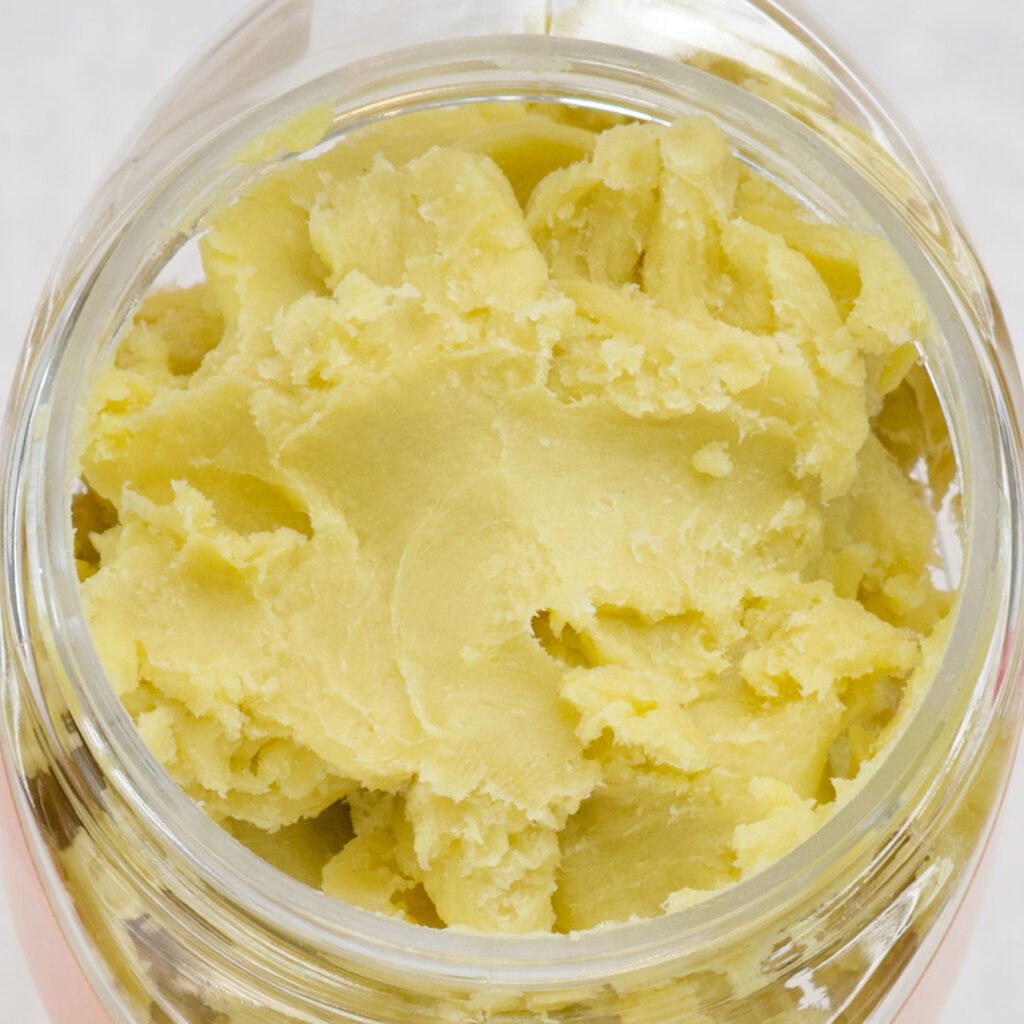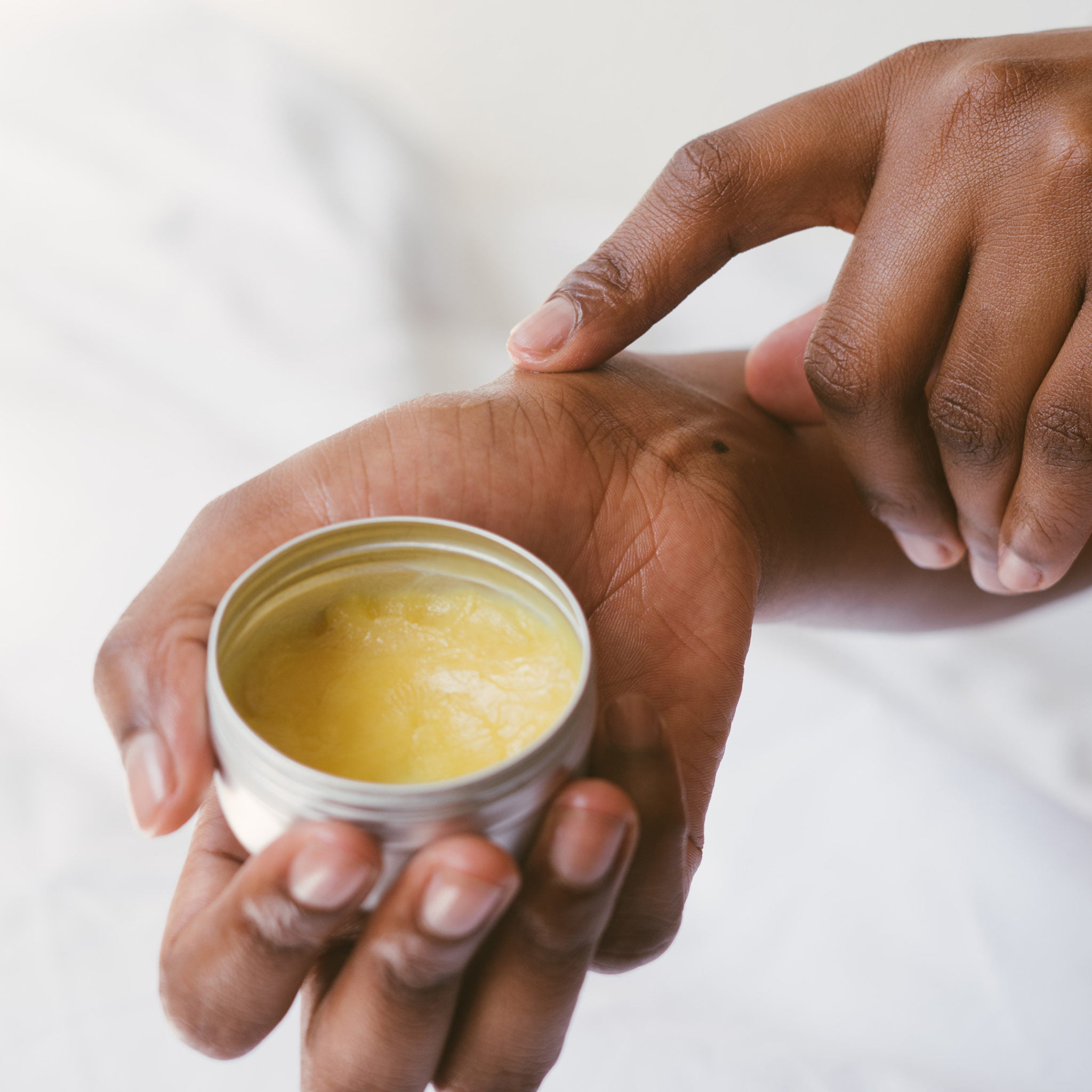Shea butter, a natural fat extracted from the nuts of the African shea tree (Vitellaria paradoxa), has long been celebrated for its moisturizing and healing properties. This rich, creamy substance, often called “women’s gold” in Africa, is a staple in many skincare routines worldwide. Beyond its use as a moisturizer, shea butter has been touted for its effectiveness in reducing scars caused by cuts, burns, and surgeries. This article delves into the science behind shea butter and its potential benefits for scar healing.
The Composition of Shea Butter
To understand how shea butter can aid in scar healing, it’s important to look at its composition. Shea butter is packed with vitamins A, E, and F, which are known for their skin-nourishing properties. It also contains essential fatty acids, such as oleic, stearic, palmitic, and linoleic acids, which help to retain moisture, promote skin elasticity, and accelerate skin repair.
Additionally, shea butter is rich in cinnamic acid, a compound that offers anti-inflammatory properties. This combination of nutrients and natural compounds is key to shea butter’s reputation as a versatile skin healer.
How Shea Butter Works on Scars
Scars form as a natural part of the skin’s healing process after an injury, such as a cut, burn, or surgery. The healing process involves several stages, including inflammation, tissue formation, and tissue remodeling. During these stages, the skin may need extra care to reduce scar formation and improve the appearance of existing scars.
Shea butter works on scars in several ways:
- Moisturization: Shea butter’s high fatty acid content makes it an excellent moisturizer. Keeping the skin well-hydrated is crucial during the healing process as it prevents dryness and flakiness, which can worsen scarring. Moisturized skin is more elastic, allowing the skin to heal more uniformly and potentially reducing the severity of scars.
- Promotes Collagen Production: Collagen is a protein that plays a crucial role in skin repair and regeneration. Shea butter contains triterpenes, compounds that may help boost collagen production and improve the skin’s structural integrity. Enhanced collagen production can help scars fade more quickly and become less noticeable.
- Anti-inflammatory Properties: Inflammation is a natural part of the healing process, but prolonged or excessive inflammation can lead to raised, hypertrophic scars. The cinnamic acid and other anti-inflammatory components in shea butter can help soothe inflammation, promoting a more balanced healing process.
- Antioxidant Protection: The vitamins A and E found in shea butter have strong antioxidant properties, which help protect the skin from free radical damage. Free radicals can slow down the healing process and make scars more prominent. By neutralizing these free radicals, shea butter helps support the skin’s natural ability to heal.
- Improved Skin Elasticity: One of the keys to scar reduction is maintaining skin elasticity. Shea butter is rich in stearic acid, which helps keep skin supple and prevents the formation of rigid scar tissue.

Scientific Evidence Supporting Shea Butter for Scar Healing
While shea butter has been used for centuries in traditional medicine to treat wounds and scars, scientific studies are still catching up. However, there is emerging evidence that supports its efficacy in scar healing.
A study published in the Journal of Clinical and Aesthetic Dermatology showed that natural oils like shea butter could help improve skin barrier function, reduce inflammation, and promote wound healing. Another study found that shea butter has strong anti-inflammatory and antioxidant effects, which can help manage conditions associated with scarring, such as eczema and psoriasis, indirectly supporting scar reduction.
Though specific clinical trials focusing exclusively on shea butter and scar healing are limited, the evidence supporting its moisturizing, anti-inflammatory, and skin-repairing properties suggests that it is a promising option for those looking to minimize scars.
Practical Tips for Using Shea Butter on Scars
For those interested in incorporating shea butter into their scar care routine, here are a few practical tips:
- Choose Unrefined Shea Butter: The effectiveness of shea butter largely depends on its purity. Unrefined shea butter retains most of its natural vitamins and healing properties. Look for products labeled as 100% pure, raw, or unrefined.
- Apply Regularly: Consistency is key when using natural remedies for scar reduction. Apply shea butter to the scarred area at least twice daily for optimal results.
- Massage the Area: When applying shea butter, gently massage it into the skin for a few minutes. Massaging can help improve blood circulation to the area and promote better absorption of the healing compounds.
- Combine with Other Ingredients: Shea butter can be combined with other natural scar-reducing agents, such as rosehip oil, vitamin E oil, or aloe vera, to enhance its effects.
- Protect from Sun Exposure: Scars are particularly sensitive to sun exposure, which can cause hyperpigmentation and make them more noticeable. While shea butter does provide some level of sun protection, it’s important to use a sunscreen with a higher SPF when exposing scarred skin to the sun.
Conclusion
Shea butter is more than just a luxurious moisturizer; it has the potential to play a significant role in scar management and healing. Its natural properties—moisturization, anti-inflammation, antioxidant effects, and promotion of collagen production—make it an excellent option for those looking to reduce the appearance of scars from cuts, burns, and surgeries. While more clinical research is needed to fully understand its effectiveness, the available evidence and centuries of traditional use suggest that shea butter is a natural remedy worth considering in the quest for healthy, scar-free skin.
Ajigofarms is a reliable global agricultural purchase sourcing with profound expertise in the manufacturing, and exportation of food crops. We are tested, and trusted suppliers of all kinds of cash crops and food crops. Our constant supply chain solution makes exporting easy, quick, and safe, we are identified with timeliness and meeting up with deadlines. Regardless of the region you are located in worldwide, you can reliably order your Agric products and be rest assured of successful delivery.




